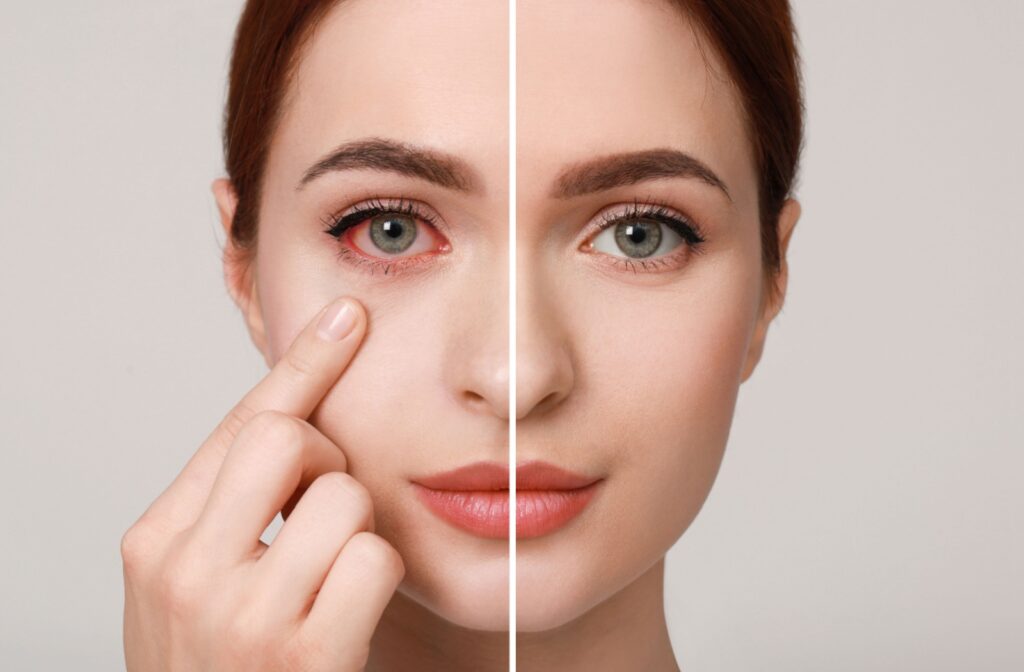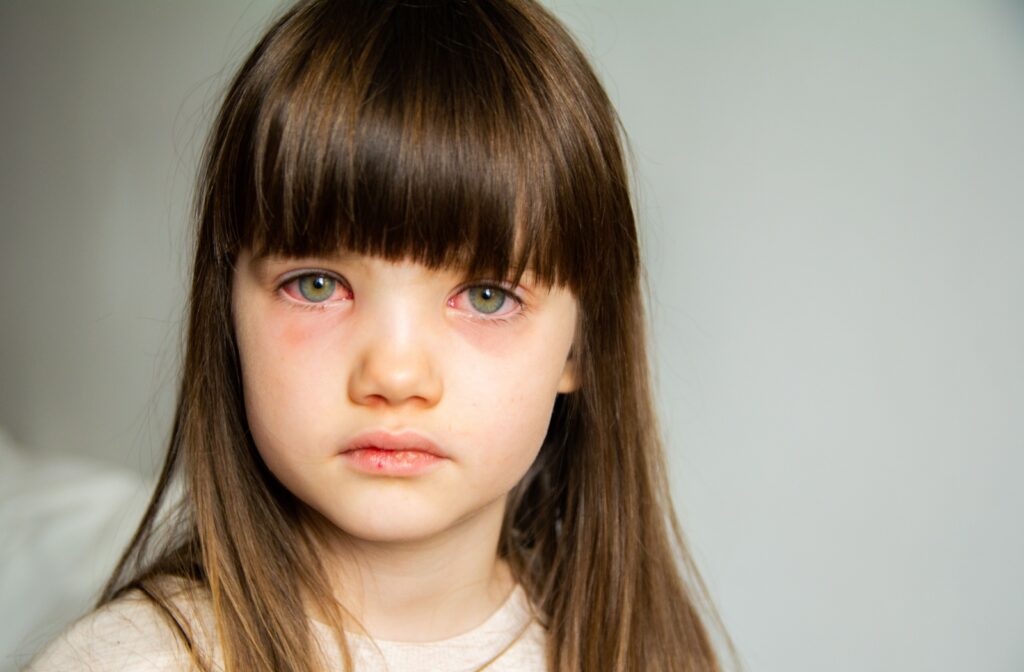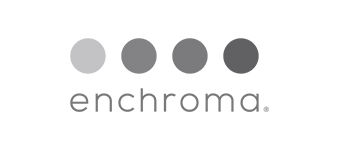Waking up with red, burning, and watery eyes can send your daily routine into a spin. When it’s your kid feeling the pain, you know it’s just the beginning of a long haul. Conjunctivitis, often called pink eye, is a common condition that can affect anyone.
The good news is that some forms of conjunctivitis, such as viral and allergic types, can resolve on their own without treatment, though intervention can help soothe symptoms. However, bacterial conjunctivitis may require antibiotics.
Getting the correct treatment means visiting your optometrist and getting an eye exam to figure out what type of pink eye you’re dealing with.
Causes of Conjunctivitis
Conjunctivitis occurs when the conjunctiva, the thin, clear tissue covering the white part of your eye, becomes inflamed. There are a few common causes depending on the type:
- Viral conjunctivitis: Often linked with common colds or respiratory infections, viral conjunctivitis spreads easily from person to person. It’s typically caused by adenoviruses.
- Bacterial conjunctivitis: Caused by bacteria such as Staphylococcus or Streptococcus, this type can result in more severe symptoms, including yellow or green discharge.
- Allergic conjunctivitis: Triggered by allergens like pollen, pet dander, or dust, this type often comes with intense itching, redness, and watery eyes.
- Chemical conjunctivitis: Smoke, chlorine, or foreign substances in the eye can also lead to conjunctivitis.
Each type requires a different approach to care, so understanding the cause is the first step in managing the condition.
How Conjunctivitis Progresses
The body is equipped to fight infections, including conjunctivitis. Viral conjunctivitis, for example, often resolves on its own within 7–14 days as the immune system clears the virus. Allergic conjunctivitis can subside once the allergen is removed, while bacterial conjunctivitis may persist if left untreated, sometimes leading to complications.
Several factors can influence recovery time:
- Your immune system: A strong immune system can clear infections more quickly.
- Type of conjunctivitis: Viral cases often resolve on their own, but bacterial infections may linger without treatment.
- Level of eye irritation: Minimizing irritants can aid quicker recovery.
Knowing how the condition progresses can help you determine whether to wait it out or seek medical intervention. It’s also important to recognize that some types of pink eye are contagious. While you can’t catch an allergic reaction from someone else, viral and bacterial pink eye can spread rapidly through a population.
If you’re waiting for your or your child’s symptoms to go away, make sure you’re not accidentally spreading it to other people. Pink eye is typically contagious for as long as you have symptoms that cause discharge or redness. These symptoms can clear up in about a week.
When to Seek Medical Attention
While many cases of conjunctivitis can clear up without a visit to the doctor, there are times when professional help is essential. You should contact your eye doctor if:
- Symptoms persist or worsen after 1 week
- You experience severe pain, swelling, or blurry vision
- There is an excessive yellow or green discharge
- You notice sensitivity to light
Additionally, if you have underlying health conditions like diabetes or a compromised immune system, the risk of complications may increase, making prompt medical attention vital.

Self-Care & Home Remedies
For mild cases of conjunctivitis, there are several simple yet effective steps you can take at home to relieve symptoms and speed up recovery:
- Warm compresses: Applying a clean, warm cloth to your eyes can reduce swelling and discomfort, especially for bacterial or irritant-related cases.
- Maintain eye hygiene: Wash your hands often, avoid touching your eyes, and change pillowcases regularly to prevent further irritation or spreading the infection.
- Over-the-counter treatments: Lubricating eye drops can provide relief for dryness and irritation.
These remedies can make a big difference, especially while your body naturally fights the infection.
Medical Treatments for Pink Eye
When conjunctivitis requires more comprehensive care, medical treatments can help. We may recommend:
- Antibiotics for bacterial conjunctivitis: Eye drops or ointments prescribed by your doctor can clear infections quickly and reduce the risk of spread.
- Antihistamines for allergic conjunctivitis: Oral or topical antihistamines can alleviate symptoms like itching and redness by combating your body’s allergic reaction.
Your healthcare provider will recommend treatment options tailored to the cause of your condition.
Tips for Preventing Conjunctivitis
It’s hard to deny that one of the best ways to handle conjunctivitis is to avoid it altogether. Simple preventive habits go a long way toward protecting your family’s eyes—especially when we’re talking about infectious conjunctivitis. Here are some tips to keep in mind:
- Wash your hands frequently with soap and water
- Avoid sharing towels or makeup
- Replace your contact lenses
- Limit exposure to allergens
- Use air purifiers to reduce irritants in your home
- Wipe down frequently used surfaces or items
- Avoid rubbing your eyes
- Keep children with viral or bacterial conjunctivitis home from school
With these practices, you can lower the chances of contracting conjunctivitis and keep your eyes healthy.
Clear Eyes for Clear Days Ahead
Conjunctivitis may be uncomfortable, but for many, it’s a temporary nuisance that resolves with minimal intervention. Whether your pink eye is viral, bacterial, or allergy-related, understanding the cause and following proper care can make all the difference in recovery.If you’re unsure about your symptoms or need professional guidance, our Stonebridge Eyecare team is here to help. Book your appointment today and take the first step toward happier, healthier eyes!










